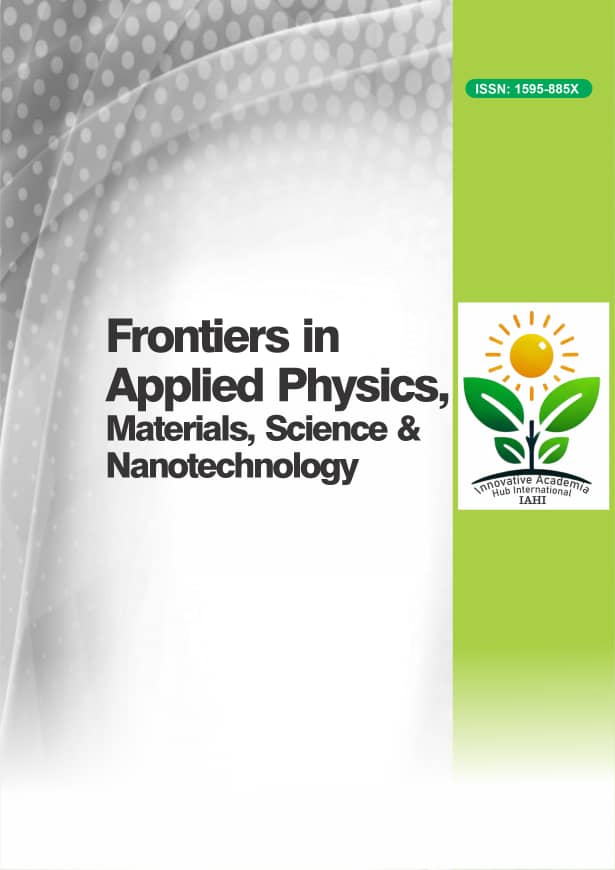Advances in Energy-Efficient Nanostructured Solar Cells: An Interdisciplinary Review of Quantum Materials, Nanotechnology, and Power Electronics Perspectives.
Published 2025-10-01
Keywords
- Nanophotonic solar cells,
- Light trapping,
- Plasmonics,
- Perovskite photovoltaics,
- Tandem architectures
- Scalable nanofabrication ...More
Copyright (c) 2025 Frontiers in Applied Physics, Materials Science, and Nanotechnology

This work is licensed under a Creative Commons Attribution 4.0 International License.
How to Cite
Abstract
The advancement of nanostructured and nanophotonic solar cells represents a transformative pathway toward overcoming the fundamental limitations of conventional photovoltaic devices. This paper presents a comprehensive review of recent progress in theoretical principles, materials engineering, nanofabrication strategies, and device architectures that collectively aim to enhance solar energy conversion efficiency. Beginning with an exploration of quantum confinement, plasmonics, and hot-carrier mechanisms, the study highlights how nanoscale engineering enables bandgap tunability, improved spectral matching, and extended absorption beyond bulk semiconductor limits. Key classes of materials, including silicon, III–V semiconductors, perovskites, and emerging organic–inorganic hybrids, are critically assessed in relation to their compatibility with nanostructuring approaches. Fabrication techniques spanning top-down lithography, bottom-up chemical growth, and hybrid roll-to-roll imprinting are evaluated for scalability, precision, and industrial applicability. Nanophotonic design strategies, such as light trapping, waveguiding, and integration of plasmonic and photonic crystal structures, are shown to significantly enhance absorption and carrier collection in thin-film and tandem architectures. Performance benchmarks demonstrate that perovskite/silicon tandems and III–V multi-junction concentrators, when coupled with nanophotonic layers, are achieving efficiencies above 30% and approaching theoretical maxima. Despite these advances, critical challenges remain, particularly in fabrication cost, long-term stability, and large-area uniformity. Emerging solutions, including computational inverse design, scalable nanoimprint lithography, and durable material systems, indicate a clear trajectory toward commercial viability. This review underscores that nanophotonics is poised to accelerate the transition of solar technologies from laboratory-scale demonstrations to high-efficiency, industrial-scale deployment in the coming decade.
